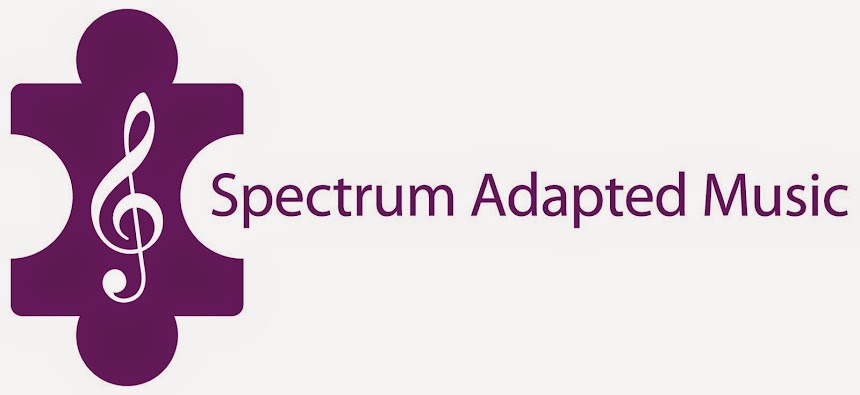Welcome to Spectrum Adapted
Music!
SAM is a piano teaching
method for individuals who learn differently.
The benefits of learning
how to the play the piano are numerous and well-documented. They include: 1) developing focus, concentration and memory
thereby benefiting complex thought processes; 2) building confidence by becoming
an area of competence; 3) improving hand-eye coordination and fine motor
control; 4) enhancing brain response to
sound and sharpening auditory perception (i.e., sensory regulation); 5) providing an opportunity for
self-expression and non-verbal communication, removing students from the
anxiety and stress of typical conversations and socializing; and 6) adding to structural regularity
in the home environment through regular practice time, to name a few.
Based on the principles of
applied behaviour analysis (ABA), SAM uses shapes, colors and keyboard stickers
to teach note reading and music concepts.
The prompts are eventually faded so all learners can read music on a
grand staff. SAM provides a complete
music learning experience; all music concepts are taught, including rhythm.
SAM is a concrete, carefully
sequenced, and highly repetitive approach to teaching the piano. It was
developed through detailed research of current piano teaching methodologies
used with typically developing children, with the challenges of non-verbal individuals
on the autism spectrum in mind. SAM can
be used with any student who struggles applying the music alphabet to the piano
(for example, individuals learning the alphabet for literacy skills) or for
whom traditional clapping or tapping exercises to learn rhythm are too abstract.
SAM consists of a Primer (which introduces the concept of a note on a page representing a note on the keyboard and begins to develop fine motor and visual tracking skills) and three levels. Level 1 consists of six music books, Level 2 consists of four music books, and Level 3 consists of two music books. The materials have been written using the professional music publishing software Finale. The objective is for students to move on to the Edna-Mae Burnam materials at the end of Level 3.
I developed SAM for my low-verbal son with autism spectrum disorder. SAM's mission is to make the piano accessible to individuals who cannot learn how to play using traditional teaching methods and music books.
- Naomi
SAM consists of a Primer (which introduces the concept of a note on a page representing a note on the keyboard and begins to develop fine motor and visual tracking skills) and three levels. Level 1 consists of six music books, Level 2 consists of four music books, and Level 3 consists of two music books. The materials have been written using the professional music publishing software Finale. The objective is for students to move on to the Edna-Mae Burnam materials at the end of Level 3.
I developed SAM for my low-verbal son with autism spectrum disorder. SAM's mission is to make the piano accessible to individuals who cannot learn how to play using traditional teaching methods and music books.
- Naomi
